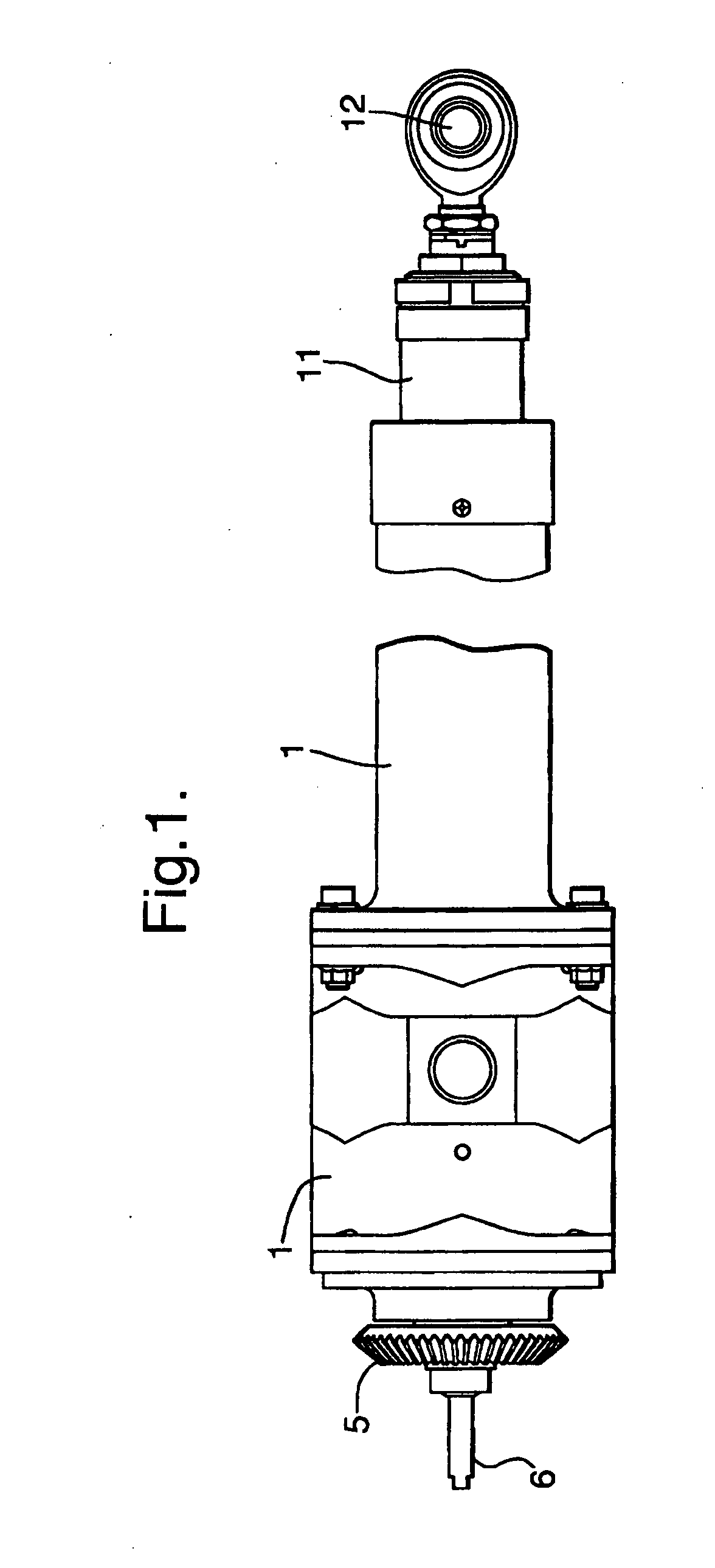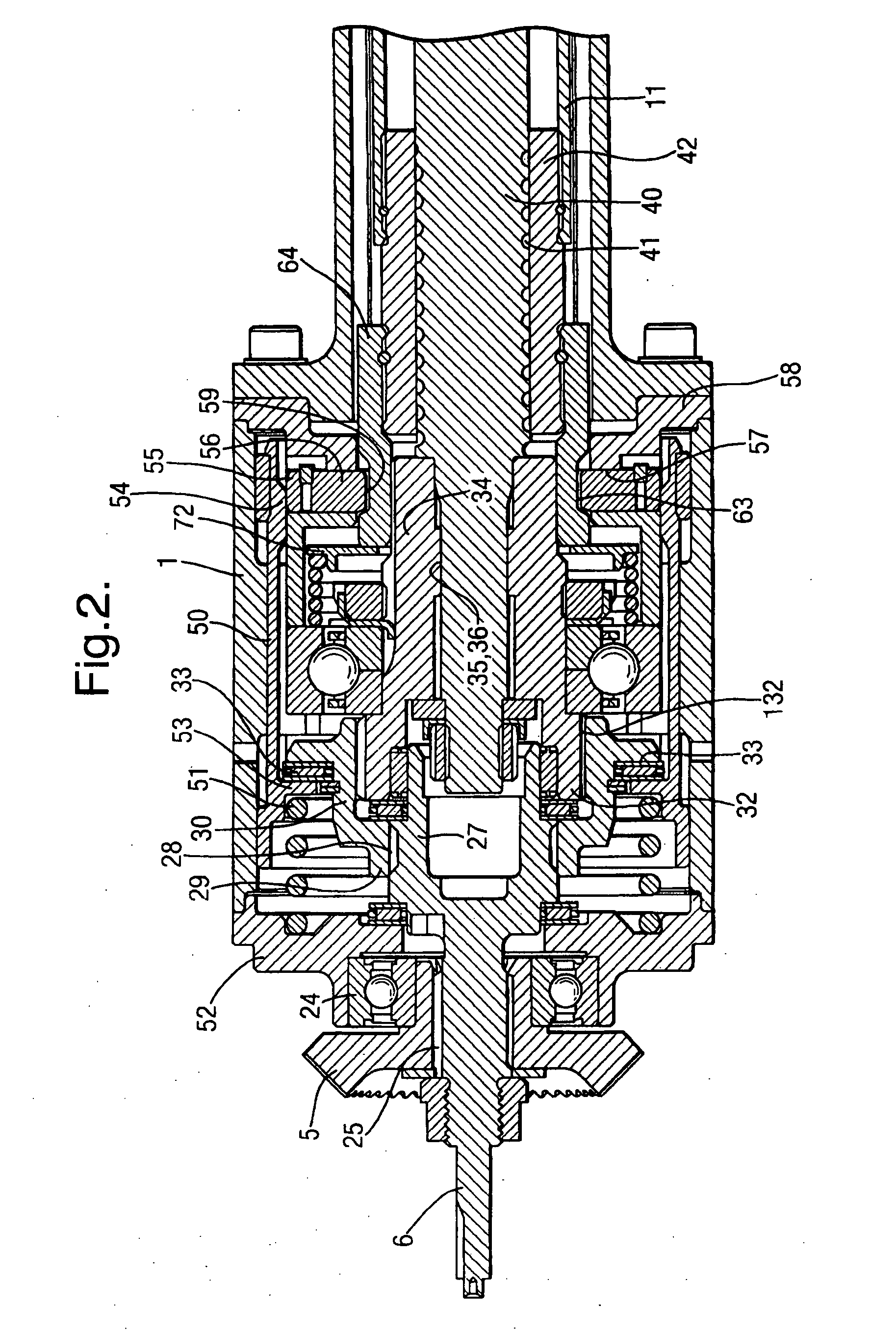Actuators
a technology of actuators and actuators, applied in the field of actuators, can solve the problems of increasing the cost and complexity of actuators, the weight of independent lock actuators, and the equipment required to support them
- Summary
- Abstract
- Description
- Claims
- Application Information
AI Technical Summary
Benefits of technology
Problems solved by technology
Method used
Image
Examples
Embodiment Construction
[0017]With reference first to FIGS. 1 and 2, the actuator has an outer casing 1 of generally cylindrical shape and is supported approximately midway along its length by two gimbals for pivoting movement about an axis at right angles to the length of the casing. At the left-hand end of the casing 1, on one side, there is an input drive connection 5 in the form of a bevel gear mounted to the axial drive shaft 6. A lead screw and nut mechanism indicated by the numeral 40 and 42 converts the rotary motion of the axial drive shaft 6 into linear motion of a generally cylindrical ram member 11 so that this is extended out of or retracted into the right-hand end of the casing 1. The ram member 11 has an eye 12 at its far end to which a member to be displaced, such as a door or panel, is attached. When the ram member 11 is fully retracted into the casing 1 it is locked in the retracted position by the mechanism until a rotary drive is applied by via the bevel gear 5 to extend the ram.
[0018]T...
PUM
 Login to View More
Login to View More Abstract
Description
Claims
Application Information
 Login to View More
Login to View More - R&D
- Intellectual Property
- Life Sciences
- Materials
- Tech Scout
- Unparalleled Data Quality
- Higher Quality Content
- 60% Fewer Hallucinations
Browse by: Latest US Patents, China's latest patents, Technical Efficacy Thesaurus, Application Domain, Technology Topic, Popular Technical Reports.
© 2025 PatSnap. All rights reserved.Legal|Privacy policy|Modern Slavery Act Transparency Statement|Sitemap|About US| Contact US: help@patsnap.com



